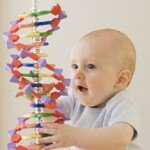 Dr Neeta Tailor is an anaesthetist working at the Royal Gwent Hospital in Wales. Dr Tailor recently treated a friend of Genomes Unzipped members (referred to here as Patient X) who required emergency surgery following some unusual and fairly horrible complications (believe me, I’ve seen the photos!) from wisdom tooth removal. The remarkable thing about this case: prior to surgery the patient volunteered information about her potential drug responses based on her 23andMe profile, including variation in one gene that could have had a profound effect on her response to a standard muscle relaxant. Dr Tailor kindly agreed to write up her experience in this guest post.
Dr Neeta Tailor is an anaesthetist working at the Royal Gwent Hospital in Wales. Dr Tailor recently treated a friend of Genomes Unzipped members (referred to here as Patient X) who required emergency surgery following some unusual and fairly horrible complications (believe me, I’ve seen the photos!) from wisdom tooth removal. The remarkable thing about this case: prior to surgery the patient volunteered information about her potential drug responses based on her 23andMe profile, including variation in one gene that could have had a profound effect on her response to a standard muscle relaxant. Dr Tailor kindly agreed to write up her experience in this guest post.
For those interested in the genetic details: Patient X’s 23andMe results suggest she is heterozygous for the rs1799807 SNP, which induces an aspartate to glycine change in the BCHE gene and is associated with a substantially prolonged apnea (loss of breathing) following administration of succinylcholine. This is one of three separate mutations in the BCHE gene tested by 23andMe. Although in this case the clinicians had already decided independently to avoid the use of succinylcholine, it’s intriguing to think about how rapidly this type of information could become useful to clinicians – and what steps will need to be taken to ensure DTC genetic testing results are trustworthy enough to justify their consideration in this kind of emergency setting. [DM]
Anaesthesia is classically described as the pharmacologically induced triad of amnesia (memory loss), analgesia (pain reduction) and the loss of muscle reflexes. Patients usually come across anaesthetists during their pre-operative anaesthetic assessment; we are the ones telling you that our job is to pop you off to sleep, although it is usually more complicated than that!
The patient described below works in the world of genetics and invited me to describe her case in order to illustrate how pharmacogenomics and person specific genetic characteristics may affect the choice of general anaesthesia.
A 37 year old woman (Patient X) was booked onto the emergency theatre list on a Sunday morning. The planned operation was incision and drainage of an infected haematoma in the cheek, an unusual complication which had developed quickly over 48 hours following the extraction of a wisdom tooth by her own dentist. By the time she was admitted to hospital, she had extensive facial swelling, not just of her gum, but also the whole of the left side of her face from her forehead to her neck. In addition, she had reduced jaw movement, as well as limited mouth opening of less than one finger breadth. She was also feeling quite unwell having vomited during the night and her blood tests showed raised markers of infection. She was in pain requiring several different types of analgesia.
This presentation in itself poses some difficulty. One of our jobs as anaesthetists involves administering drugs to cause unconsciousness which subsequently requires maintenance of a patent airway using either a mask, an airway device that sits above the vocal cords, or by a tube in the trachea. We usually then maintain unconsciousness using an inhaled volatile anaesthetic via the chosen device.
During this operation we knew we were going to need to share the airway with our maxillo-facial surgery colleagues performing the procedure. To ensure the optimal outcome for all (an anaesthetised patient for us and access to the mouth for the maxfax team), a tube in the trachea was the most ideal option. However, to get to the trachea, we have to get in the mouth and get a good view of the vocal cords and this is where the potential problem could arise.
Continue reading ‘Direct-to-consumer genetic test results in a clinical setting: a case report’



 RSS
RSS Twitter
Twitter
Recent Comments